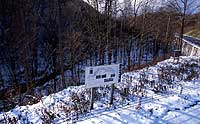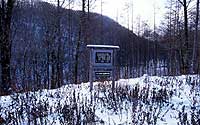
| Pseudonym reading | |
|---|---|
| Specified type | Prefecture designation |
| Type | Historic site |
| Designated date | May 7, 1999 |
| Specified details | |
| quantity | |
| location | Sumita-cho Seta rice cake Uezawa |
| owner | Sumita |
| Holding group | |
| Management organization | |
| home page | Iwate's Cultural Information Encyclopedia (Iwate's Mine History: Kuriki Tetsuzan) |
Overview
The Kuriki Iron Mountain Site is located on the left bank of the Otakugawa River in contact with National Route 397, which passes from Oshu-shi Esushi-ku to Sumita-cho from Oshu-shi Mizusawa-ku. Under the influence of the steel slump after World War I, the privately-owned steel mill site continued until the closure of the mountain in 1920).
At that time, as a privately-owned steel mill, it was temporarily boasted of the third largest production in the country.
In the past, blast furnaces, foundries and related facilities, as well as offices, post offices, and branch schools were lined up, and by observing the ground surface, traces of various facilities at that time can be confirmed over approximately 700 meters.
In addition, the first blast furnace and the second blast furnace have been confirmed by a total of four excavation surveys from 1993 to 1998.
The blast furnace of Kuriki Tetsusan belongs to the system of the Western-style blast furnace since the end of the Edo period and is extremely important in the history of iron making technology in Japan.
In addition, the entire trace of the iron mine is the only existing in Japan as a mountain-type small blast furnace steelmaking site located in the Meiji and Taisho periods.
The remains of the remains of the blast furnaces and their related facilities at different times, such as the 1st blast furnace and the 2nd blast furnace, and the small villages based on steelmaking are completely preserved.
These are extremely valuable sites to know the development and development of modern industrial technology, and can be said to be the first class sites in modern industrial history.
(The fifth historic site scenic spot natural monument designation criteria 1)
image

